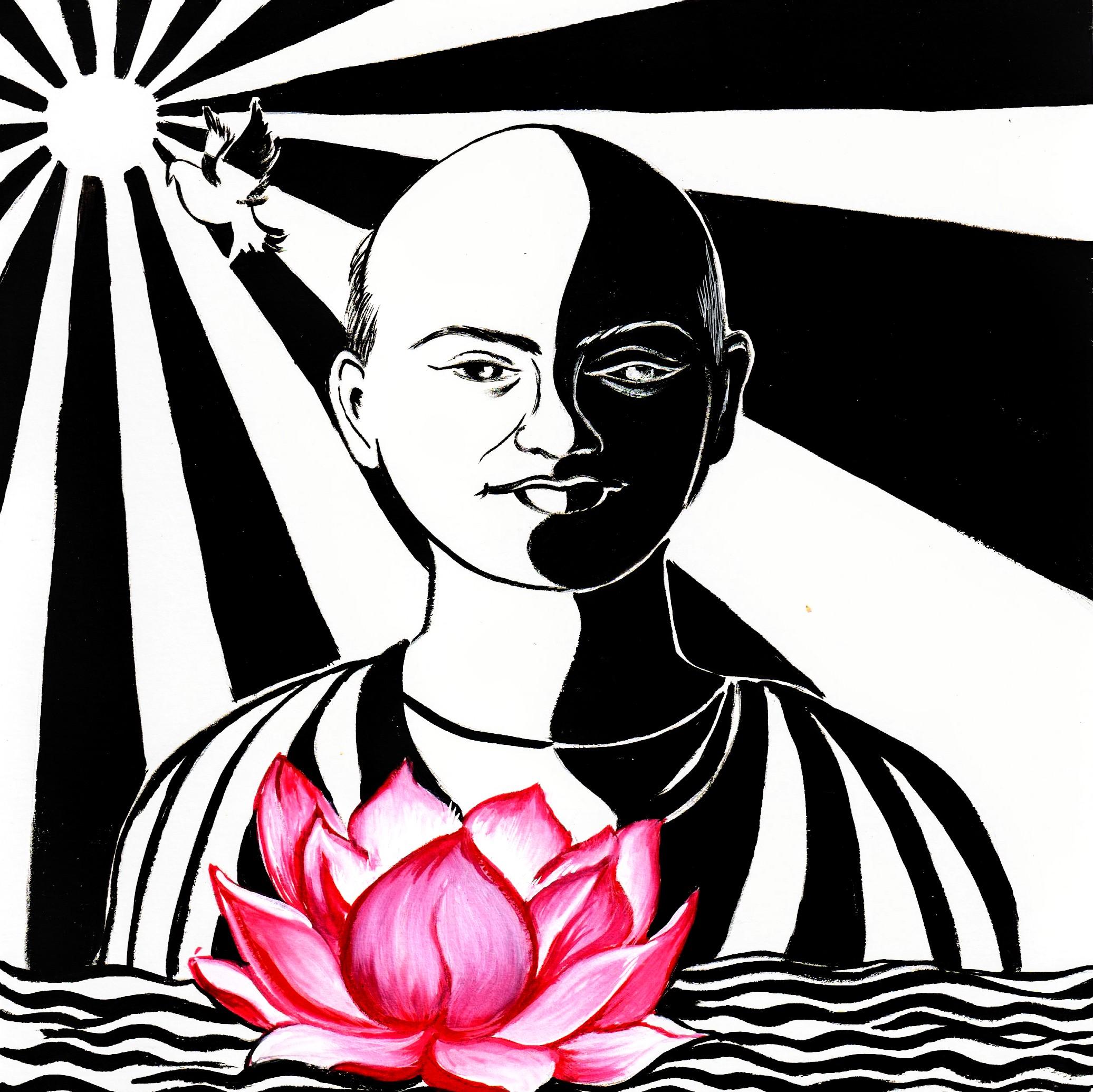Inclining Toward Freedom, Even Through Imperfections

IMAGE OF THE WEEK
We are grateful to Rupali Bhuva for offering this hand-made painting for this reading.

If we focus only on awakening, we miss most of the spiritual practice. I’m much more interested in how we practice with not awakening, with not being enlightened, because, frankly, those states of being are more present in my life than not.
Lately, as I strive to promote diversity and anti-racism both inside and outside of dharma communities, I’m finding new depths of disappointment and disillusionment at the limitations of my own capacities, at the imperfections of our communities, and at the harm occurring in our larger culture. We don’t live in an enlightened world—have you noticed? As a dharma teacher, I was trained to teach the insights and kindnesses that I have felt. However, these days I feel propelled to teach from where I am—to be real and authentic in the moment, in the midst of places where I do not have answers, and from the limitations of my own flaws. [...]
We must dig deep into our practice in order to navigate the extremes of despair and disillusionment. We must listen to what is underneath it all, to where freedom is calling from, by asking: Can I open to this? Can I turn toward this? Or in the inadequate language with which we must communicate, can I love this too? Can we incline toward the despair and imperfections of this life with the same diligence we give other objects of mindfulness? Can we practice presence when life feels impossible?
It may seem counterintuitive, but when we practice awareness and offer kindness to the uncooked, imperfect aspects of our lives, we actually strengthen our mindfulness. We don’t need to attach to either awakening or non-awakening; neither is anything more than an experience to hold with tender awareness.
Awakening and not awakening are two sides of the same coin. They are the same experience. We can’t experience awakening without experiencing not awakening. We can’t experience insight without becoming intimately familiar with our conditioned patterns. [...]
Thus, even in my imperfections, even in my failures, I can still incline my heart toward freedom. This is how I see the paths of awakening and non-awakening interweaving. This is freedom in the midst of suffering. This is resilience despite the forces of violence and oppression. We can create beautiful lives right where the world is not yet awake.
Each time we practice awareness and kindness, we transform not only our personal world but the world itself. We begin to be able to hold the unholdable, to connect the broken heart and the raging mind. We look for the precious wisdom embedded within that bitter rage, and as soon as we begin to look, we are no longer consumed by the rage itself. We turn toward the direct experience of despair and weave it into care, love, and, dare we say, freedom. This is the magnitude of our spiritual practice. It asks us to include all the contradictions and paradoxes of awakening and not awakening and everything in between. It is the in-between—the range from extreme to subtle, the spectrum connecting opposing forces—that constitutes the totality of our lives, our practice, and our freedom.
From full article here. Larry Yang is a Spirit Rock teacher and is a core teacher at the East Bay Meditation Center (Oakland) and Insight Community of the Desert (Palm Springs); his book is Awakening Together.
SEED QUESTIONS FOR REFLECTION: What does inclining your heart toward freedom in the midst of suffering mean to you? Can you share a personal story of a time you were able to experience insight by becoming intimately familiar with your conditioned patterns? What helps you treat awakening and non-awakening as two sides of the same coin?